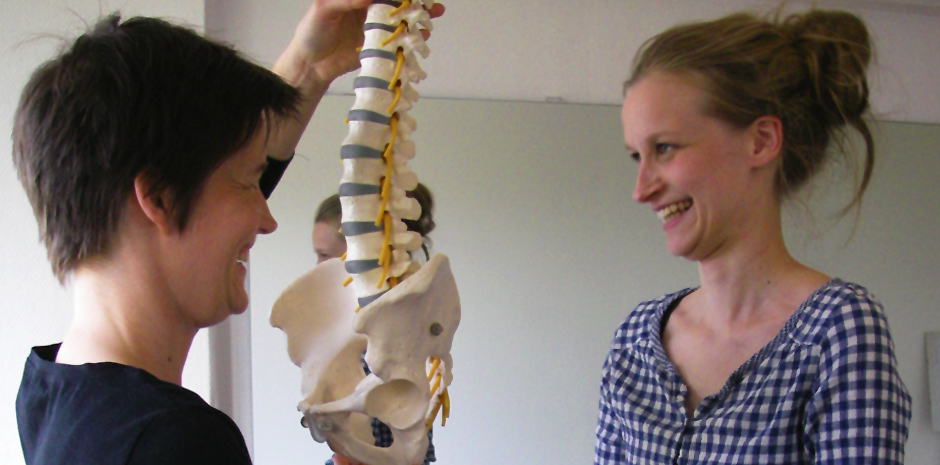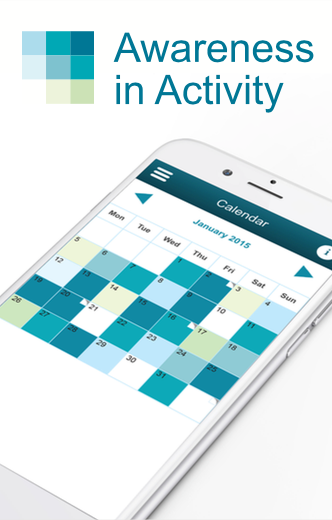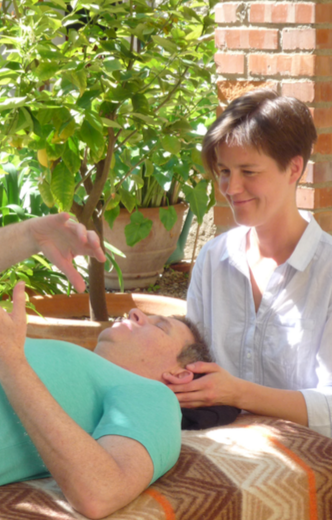Frequently asked questions
What is the Alexander Technique?
The Alexander Technique is a learning method to become aware and alter physical and mental behavioural patterns that effect our health, performance and well-being. It is based on increasing awareness in activities, balancing the nervous system, improving body alignment (especially in the area of head, neck and back), releasing excessive muscular tension, finding the optimal muscular tone, and well balanced movement patterns.
Pain, complaints, rehabilitation and prevention
Many people come to the Alexander Technique because of wide variety of physical and mental pain and complaints.
The Alexander Technique is being used to help people with a wide range of physical and mental complaints. The common complaints that bring people to the AT are musculoskeletal pain like back, neck, shoulder and joint pains. Depression, panic attacks, anxiety, stress and burn out. To ask more about your specific condition and AT, please contact me by email, telephone or schedule a try out lesson.
Even though the Alexander Technique has become famous for helping people with pain and complaints in it’s essence the technique is based on the ideas of prevention and increase of general well-being, rather than treating a complaint. The AT is also found helpful in pain management in chronic conditions.
The AT principle is based on improving our general Use. The body and mind is a unit. The way how we use ourselves in every day life affects the structure and functioning of our body. The habitual way how we move; walk, sit, stand, breath, use computer or reach for a cup of tea, together with how we feel, think and react, forms the psychophysical ‘Use’ of oneself.
Our ‘Use’ is largely unconscious and habitual. Habits are an important part of our human behavior, however some of the habits we have can in time effect our health and well-being in a harmful way.
The strength of the AT lies in becoming aware of and unlearning harmful habitual patterns and activating the natural support and reflex systems in the body to support us with ease and less muscular effort throughout our daily activities.
The Alexander Technique is being used to help people with a wide range of physical and mental complaints. The common complaints that bring people to the AT are musculoskeletal pain like back, neck, shoulder and joint pains. Depression, panic attacks, anxiety, stress and burn out. To ask more about your specific condition and AT, please contact me by email, telephone or schedule a try out lesson.
Even though the Alexander Technique has become famous for helping people with pain and complaints in it’s essence the technique is based on the ideas of prevention and increase of general well-being, rather than treating a complaint. The AT is also found helpful in pain management in chronic conditions.
The AT principle is based on improving our general Use. The body and mind is a unit. The way how we use ourselves in every day life affects the structure and functioning of our body. The habitual way how we move; walk, sit, stand, breath, use computer or reach for a cup of tea, together with how we feel, think and react, forms the psychophysical ‘Use’ of oneself.
Our ‘Use’ is largely unconscious and habitual. Habits are an important part of our human behavior, however some of the habits we have can in time effect our health and well-being in a harmful way.
The strength of the AT lies in becoming aware of and unlearning harmful habitual patterns and activating the natural support and reflex systems in the body to support us with ease and less muscular effort throughout our daily activities.
What happens during a lesson?
The Alexander Technique is taught in private lessons, by a qualified teacher who has completed a three-year, full-time teacher training.
During a lesson the principles are experienced in simple every day activities like sitting, standing and walking; all with gentle hands on guidance and verbal instructions from the teacher. Part of the lesson may include lying down in a semi-supine, allowing this classic AT position to give full support and relief for the back.
You can also choose to focus on specific tasks like working at the computer, lifting up heavy things, speaking, playing an instrument etc. On the first lesson motives and goals can be discussed with your private teacher.
The Alexander Technique is suitable for people of all ages and levels of physical fitness.
During a lesson the principles are experienced in simple every day activities like sitting, standing and walking; all with gentle hands on guidance and verbal instructions from the teacher. Part of the lesson may include lying down in a semi-supine, allowing this classic AT position to give full support and relief for the back.
You can also choose to focus on specific tasks like working at the computer, lifting up heavy things, speaking, playing an instrument etc. On the first lesson motives and goals can be discussed with your private teacher.
The Alexander Technique is suitable for people of all ages and levels of physical fitness.
Is there a professional society?
The Dutch society of teachers of the Alexander Technique, NeVLAT, (de Nederlandse Vereniging van Leraren in de Alexandertechniek), was founded in 1996. It works together with eighteen sister societies worldwide and has at the moment about 80 teacher members.
Other international Alexander Technique societies:
Other international Alexander Technique societies:
Is there scientific research about the Alexander Technique?
There is increasingly more research available about the Alexander Technique and it’s health benefits.
For example, in 2008, the British Medical Journal organized a research: “Randomised controlled trial of Alexander technique lessons, exercise, and massage (ATEAM) for chronic and recurrent back pain”.
In 2011 there was a review published in the International Journal of Clinical Practise about “The evidence for the effectiveness of Alexander Technique lessons across different health related conditions”.
In both of these researches it could be seen that the Alexander Technique gives long-term relief from back pain and is beneficial also for other health related conditions.
Links to lists of research:
Is the Alexander Technique covered by health insurance?
The AT is well known amongst performers, why is that?
Art and Sport
The Alexander Technique is well known amongst musicians and performers. It is taught in most music conservatories and theatre schools worldwide, with many learning it during their professional studies.
One of the reasons why AT has earned it’s firm role in the world of arts and sports, is because when applied to performing an act of art or sport, one can recognise the benefits of the AT immediately.
"Optimum muscular effort"
In order to perform an activity well, one needs just the right amount of muscular effort. This will in turn optimise the speed, preciseness and subtle movement in a performance. However it can often be difficult to judge what the "optimum muscular effort" is and how to find it?
The Alexander Technique helps with these questions and shows how to release excessive tension and have the required tone for certain muscles.
Reaching a goal
Rehearsing and training without a clear idea of the desired result is not only difficult, but can quickly turn into mindless repetition. Practising without wanting to directly reach an end result is a task that requires advanced skills and knowledge.
The AT helps one to find ways of how to stay in the moment and in contact with one’s mind and body. The techniques can be applied in practising as well as in performance, concert or competition.
Public speaking, management
The same techniques that are used by top performers in art and sport are beneficial to anyone who needs to “keep ones cool” in any situation in life and business.
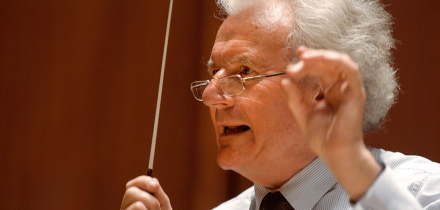
"Forty years ago, after one of my concerts, Adrian Boult told me that if I continued to conduct like that I'd become a cripple, and that I must take lessons in the Alexander Technique. Today I am still having lessons - as with music, there is no end to the learning process. It affects not only the use of the body, but also one's views of oneself and one's behavior. For the aches and ills that come with the years, the Technique can work miracles."
Sir Colin Davis, conductor
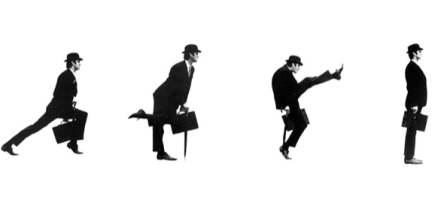
“I find the Alexander Technique very helpful in my work. Things happen without you trying. They get you to be light and relaxed. You must get an Alexander teacher to show it to you."
John Cleese, Actor, Comedian, Ministry of Silly Walks

Alan Rickman described using the Alexander Technique to produce a "balanced sense of tension rather than relying on creating tension to do something in order to produce a sound or an act that is preconceived.”
Alan Rickman, actor and director (1946 – 2016)
More information about AT lessons for musicians
The Alexander Technique is well known amongst musicians and performers. It is taught in most music conservatories and theatre schools worldwide, with many learning it during their professional studies.
One of the reasons why AT has earned it’s firm role in the world of arts and sports, is because when applied to performing an act of art or sport, one can recognise the benefits of the AT immediately.
"Optimum muscular effort"
In order to perform an activity well, one needs just the right amount of muscular effort. This will in turn optimise the speed, preciseness and subtle movement in a performance. However it can often be difficult to judge what the "optimum muscular effort" is and how to find it?
The Alexander Technique helps with these questions and shows how to release excessive tension and have the required tone for certain muscles.
Reaching a goal
Rehearsing and training without a clear idea of the desired result is not only difficult, but can quickly turn into mindless repetition. Practising without wanting to directly reach an end result is a task that requires advanced skills and knowledge.
The AT helps one to find ways of how to stay in the moment and in contact with one’s mind and body. The techniques can be applied in practising as well as in performance, concert or competition.
Public speaking, management
The same techniques that are used by top performers in art and sport are beneficial to anyone who needs to “keep ones cool” in any situation in life and business.

"Forty years ago, after one of my concerts, Adrian Boult told me that if I continued to conduct like that I'd become a cripple, and that I must take lessons in the Alexander Technique. Today I am still having lessons - as with music, there is no end to the learning process. It affects not only the use of the body, but also one's views of oneself and one's behavior. For the aches and ills that come with the years, the Technique can work miracles."
Sir Colin Davis, conductor

“I find the Alexander Technique very helpful in my work. Things happen without you trying. They get you to be light and relaxed. You must get an Alexander teacher to show it to you."
John Cleese, Actor, Comedian, Ministry of Silly Walks

Alan Rickman described using the Alexander Technique to produce a "balanced sense of tension rather than relying on creating tension to do something in order to produce a sound or an act that is preconceived.”
Alan Rickman, actor and director (1946 – 2016)
More information about AT lessons for musicians
Who can benefit from the AT?
How many lessons are recommended?
Learning the Alexander Technique is like learning a new language. Already from the first lesson you can start to apply some of the basic principles in your daily activities.
To accomplish a level that means that you can apply the technique independently, usually up to 24 lessons is recommended.
One way to start the technique is to have an ‘introduction period’, with shorter lessons more frequently, for example, twice a week. For this purpose we are offering a special deal of 30 minute lessons (8 x 30 min Card).
After the ‘introduction period’, most people continue with a 30 or 45 minute lesson once a week.
Depending on your needs and schedule the frequency can also be flexible.
To accomplish a level that means that you can apply the technique independently, usually up to 24 lessons is recommended.
One way to start the technique is to have an ‘introduction period’, with shorter lessons more frequently, for example, twice a week. For this purpose we are offering a special deal of 30 minute lessons (8 x 30 min Card).
After the ‘introduction period’, most people continue with a 30 or 45 minute lesson once a week.
Depending on your needs and schedule the frequency can also be flexible.
Code of conduct and complaints
The professional society for Alexander Technique in the Netherlands (NeVLAT) has a official procedure for complaints based on the project Support Quality Alternative Treatment / medicine (OAKB) , conducted by the Quality Institute for Healthcare CBO and subsidized by the Ministry of Health , Welfare and Sport.


